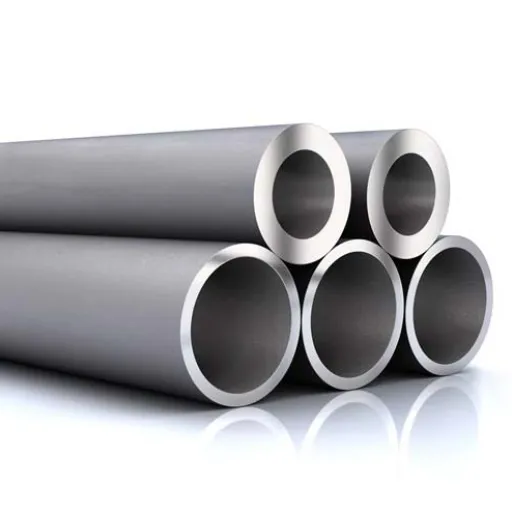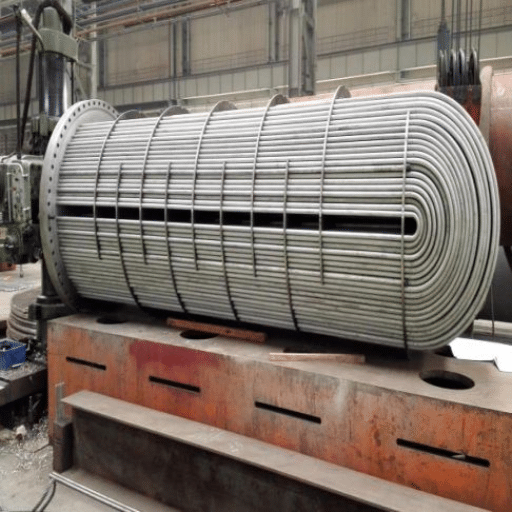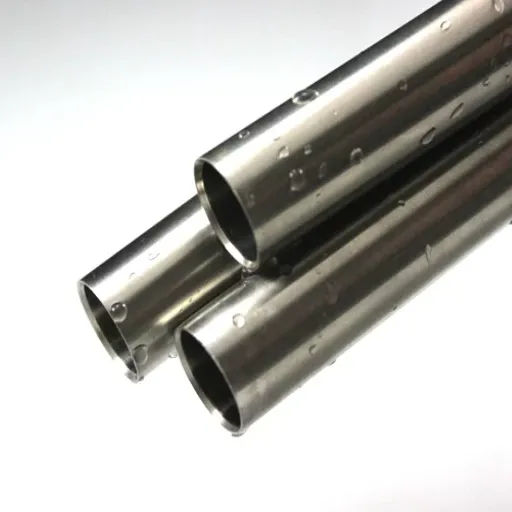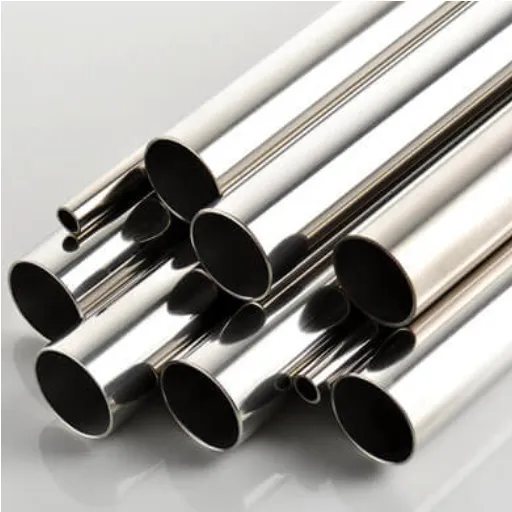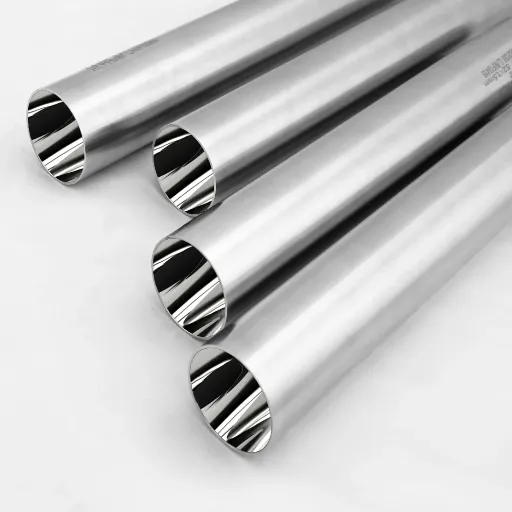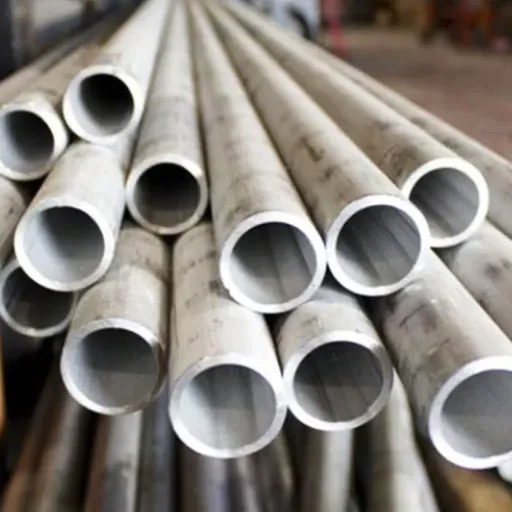Stainless steel pipes are the primary materials for numerous industries, and their durability, flexibility, and corrosion resistance make them very desirable. Amongst the different varieties of standards, ASME stainless steel pipes are easily the ones that are quality and reliability certified up to the hilt for the most demanding applications.
This blog post will take a closer look at the world of ASME stainless steel pipes, presenting their specifications, practical applications, and the substantial benefits they confer upon the industries from construction to chemical processing. Whether you are an engineer or a contractor or just someone interested in knowing more about these vital components, this guide will help you get a very clear idea of the role that ASME stainless steel pipes play in the infrastructure and industrial processes.
Introduction to ASME Stainless Steel Pipes
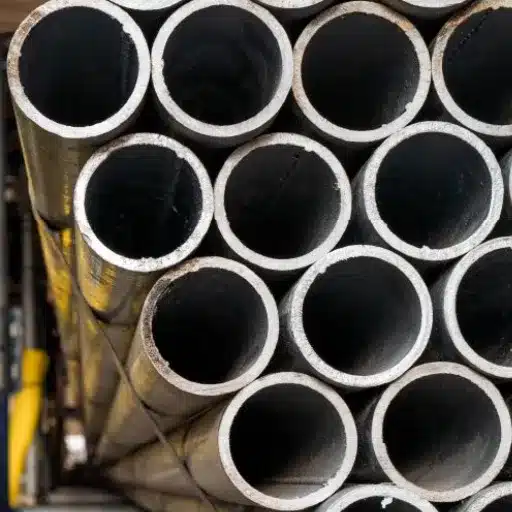
The Importance of ASME Standards
The ASME (American Society of Mechanical Engineers) standards are of utmost importance when it comes to the safety, reliability, and efficiency of stainless steel pipes that are utilized in industries and infrastructures. The guidelines that are laid out establish the limit for the manufacturers who manufacture pipes as per the specifications. Thus, the chances of failure due to the harsh conditions of high-pressure, extreme temperatures, or corrosive environments are greatly reduced.
🎯 Why ASME Standards Matter:
- Ensure safety and reliability in demanding industrial applications
- Reduce failure risks in high-pressure and extreme temperature conditions
- Promote worldwide uniformity in manufacturing standards
- Facilitate easier procurement and regulatory compliance
- Enhance system longevity and environmental safety
A recent study points out the growing demand for ASME-compliant stainless steel pipes, which is directly related to the global infrastructure projects that are on the rise as well as the technological advancements in energy systems. Apart from the quality aspect, ASME codes also help organizations in the system’s longevity, safety of public and the environment; thus, being the most important factor in today’s markets.
Stainless Steel Pipes – A Brief Introduction
The stainless steel pipes are the most durable, resistant to corrosion, and strong, therefore, they are the best and the most preferred option in the various industries. The latest insights from the search trends of the concerned suggest that many users are asking about their suitability for construction, energy, and medical applications. This increased interest is a clear indication of the fact that more and more people are relying on stainless steel pipes for their capability of functioning with reliability even in harsh environments, which are characterized by high-pressure or corrosive conditions.
✨ Key Advantages of Stainless Steel Pipes:
- Exceptional Durability: Long-lasting performance in harsh conditions
- Corrosion Resistance: Superior protection against rust and oxidation
- High Strength: Withstands extreme pressure and temperatures
- Versatility: Available in various grades and forms for diverse applications
- Sustainability: Fully recyclable, supporting green industry initiatives
- Cost-Effective: Reduced maintenance and replacement needs over time
Industries’ Relevance
Stainless steel pipes not only have but are also a significant factor that determines their existence all-around different industries, which testify to their unmatched versatility and reliability. Recent data from the search engine trends indicate that among the industries where stainless steel pipes are used the most are construction, chemical processing, and healthcare.
This is mainly because of their ability to resist corrosion, handle high temperatures and meet the most demanding hygiene standards. In their quest to cater to the ever-changing needs of the industries, the stainless steel pipes are continually affirming their relevance and demand worldwide.
Defining Key Terms and Standards
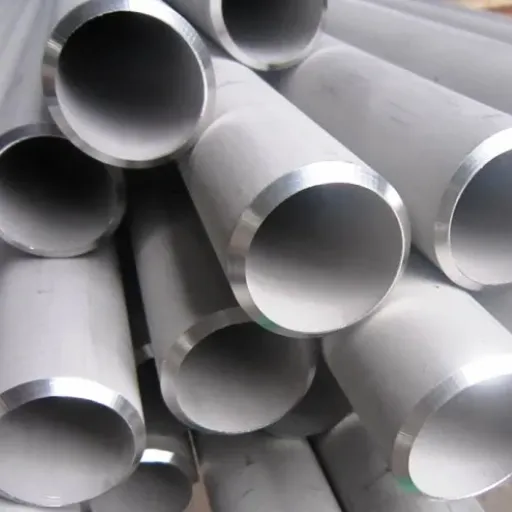
ASME B36.19M and B36.10
The inclusion of ASME B36.19M and ASME B36.10 in the ISO 2037:1993; ASTV-20-80 and ASTV-20-80 (ISO 2037:1993 Quality Assurance standards) as major specifications regulating the production of stainless steel and carbon steel pipes, respectively, naturally assume that the application of these standards will guarantee the safety and quality of manufacturing processes in heavy industries.
📋 Standard Specifications Overview:
ASME B36.19M
Focus: Stainless steel pipes (welded and seamless forms)
Applications: Industries requiring corrosion resistance and hygiene
Key Benefits: Standardization, quality assurance, safety compliance
ASME B36.10
Focus: Welded and seamless wrought steel pipe
Applications: High-pressure and high-temperature environments
Key Benefits: Enhanced safety, compatibility, regulatory compliance
The combining of insights with the latest data from the search engine unveils that these standards not only bring about standardization within the manufacture of industrial piping but at the same time, they also play a vital role in improving safety and quality in critical areas such as energy distribution, infrastructure, and chemical processing.
Understanding ASTM A312 and SA312
ASTM A312 and SA312 specifications are a universal standard in the making of stainless steel pipes, especially for the tough high-temperature and high-corrosion environments. ASTM A312 is an ASTM International-devised and maintained specification, whereas SA312 is ASME’s counterpart. The two standards are closely related to each other as they imply the requirements of seamless and welded stainless steel pipes, which are supposed to confront the most severe heat and corrosion conditions.
🔬 Specification Requirements:
- Chemical composition standards
- Tensile strength requirements
- Heat treatment procedures
- Rigorous testing protocols
- Quality assurance measures
Their use in the petrochemical, oil & gas, and power generating operations is due to their ruggedness and imperviousness. The ASTM/ASME overlapping promotes the assuredness of being adaptable and aligned between the manufacturing at one end and application at the other end, thus, making it a smooth flow through between project phases and creating worldwide acknowledgments in the industrial markets.
Key Terminology in Pipe Specifications
By all means, terminologies mastering in pipe specifications is a must for any professional in an industrial project that wants to work effectively. Here are some of the key terms which are usually met:
Nominal Pipe Size (NPS)
A standardized designation of pipe diameters, used mainly in the U.S. NPS gives the approximate inside diameter of the pipes in inches.
Schedule (SCH)
This is the wall thickness of a pipe that directly influences its strength and pressure capacity. Among the many, SCH 40, SCH 80, and SCH 160 are some of the most common used schedules.
Outside Diameter (OD) and Inside Diameter (ID)
These are the measurements of external and internal dimensions of a pipe which play a critical role in making sure that fittings are compatible and that the required flow is allowed.
Grade
The material properties and composition, usually associated with certain standards such as ASTM or ASME for example, Grade B carbon steel means specific tensile strength and yield properties are indicated, are denoted by pipes’ grade.
Seamless Pipes vs. Welded Pipes
Seamless pipes: Made by methods other than welding thus giving them superior strength and uniformity. Welded pipes: Made by fusing edges thereby making them more economical at the expense of possible reduced durability in extreme conditions.
This terminology is not only a prerequisite to understanding and choosing the right pipes according to the industry requirements but also a guarantee of safety, the effectiveness of operations, and compliance with the standards.
Technical Specifications of ASME Stainless Steel Pipes

Grades and Materials Used
ASME stainless steel pipes exist in a whole range of different grades that all have other ways of utilizing them in various industrial applications. 304, 304L, 316, and 316L are the most known grades with superb corrosion resistance, outstanding durability, and high-temperature resistance among them.
| Grade | Composition | Key Features | Primary Applications |
|---|---|---|---|
| 304 | Iron, chromium, nickel | Economical, versatile, good corrosion resistance | General industrial use |
| 304L | Low carbon version of 304 | Enhanced weldability | Welded structures |
| 316 | Iron, chromium, nickel, molybdenum | Superior corrosion resistance, pitting resistance | Marine, chemical industries |
| 316L | Low carbon version of 316 | Excellent crevice corrosion resistance | Harsh chemical environments |
Pitting and crevice corrosion are even harder to get through with the help of molybdenum addition in grades like 316. The main material of these pipes is usually austenitic stainless steel, which has its composition of iron, chromium, and nickel; the proportions vary. Depending on the grade, molybdenum, nitrogen, or titanium, very small amounts of these elements may be added to that particular grade to improve its heat resistance or mechanical strength.
Dimensions and Wall Thickness
Dimensions and wall thickness play a major role in the selection and application of stainless steel materials. The range of sizes includes Pipes, tubes, and fittings, which are all made to measure specific requirements of industries like construction, chemical processing, and oil and gas. Wall thickness is usually given in schedules (for example, Schedule 40 or Schedule 80) or exact dimensions in millimeters or inches, which determines the material’s pressure rating and strength.
📏 Dimension Considerations:
- Standard Compliance: Dimensions must align with ASTM or ASME standards
- Schedule Numbers: Indicate wall thickness and pressure ratings
- Application Matching: Select based on specific pressure and temperature requirements
- Cost vs. Performance: Balance material costs with operational needs
- Safety Margins: Ensure adequate thickness for safety factors
Pipe Schedules: Understanding Schedule 40s and Others
The major distinction between Schedule 40 and Schedule 80 pipes is the difference in their wall thickness, which in turn affects their pressure-handling capacity and appropriateness for applications.
| Schedule Type | Wall Thickness | Characteristics | Best Applications |
|---|---|---|---|
| Schedule 40 | Standard thickness | Cost-effective, lightweight, moderate pressure handling | Home water supply, drainage, general-purpose use |
| Schedule 80 | Substantially thicker | Enhanced durability, high-pressure/temperature resistance | Chemical processing, industrial manufacturing, corrosive fluid transfer |
| Schedule 160 | Extra heavy | Maximum strength, extreme pressure handling | High-pressure systems, critical industrial applications |
To be able to spot the difference, professionals usually turn to standards such as ASTM (American Society for Testing and Materials) and also use industrial tables that provide data about the inner and outer diameters, wall thicknesses, and pressure ratings for each schedule. It is by considering these factors alongside updated technical references that businesses can choose the correct pipe type that will not only be able to perform well but also be efficient in very demanding projects.
Common Applications Across Industries
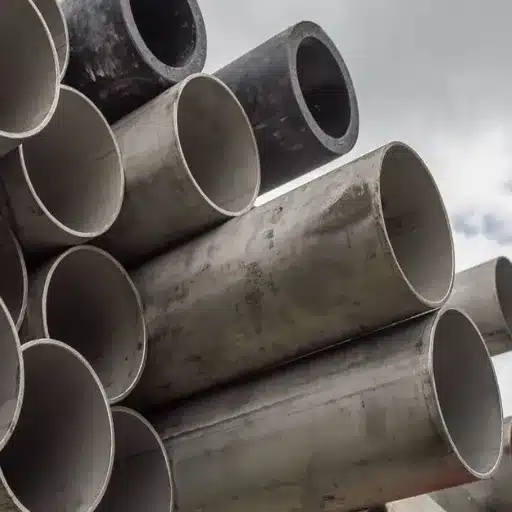
Pipes in Construction Industry
The construction industry heavily relies on pipes for numerous applications that guarantee both the structural soundness and functioning of the buildings. The pipes used for water supply are installed in the best possible way to get the water output in the quantity and quality required for each of the three major types of buildings: houses, offices, and factories.
🏗️ Construction Applications:
- Water Supply Systems: Delivering clean water throughout residential, commercial, and industrial buildings
- Drainage Systems: Preventing flooding and safely removing wastewater
- HVAC Systems: Managing air and fluid flow for climate control
- Structural Support: Providing framework and load-bearing capacity
- Fire Protection: Sprinkler systems and fire suppression infrastructure
Linked with the latest research, there is also a growing demand for the use of environmentally friendly piping materials that have a lesser impact on the environment and energy usage. By the strategy of durable design along with environmental considerations, the modern pipe applications in the construction sector are gradually uplifting to fulfill the needs of both the technology and the society.
Applications in Manufacturing and Production
Industries of manufacturing and production are heavily dependent on modern piping systems as they are the source for their existence. The latest search engine data shows that there is a growing emphasis on advanced manufacturing techniques that not only involve the usage of eco-friendly materials but also the incorporation of energy-efficient designs.
🏭 Manufacturing Benefits:
- Process Efficiency: Smooth production flow with minimal interruptions
- Cost Reduction: Energy-efficient designs lower operational expenses
- Environmental Impact: Eco-friendly materials reduce carbon footprint
- Quality Control: Consistent material properties ensure product quality
- Sustainability: Long-lasting systems minimize replacement needs
Oil and Gas Production Sector Constraints
The oil and gas sector is strictly regulated, thus, safety, efficiency, and environmental concerns are at the top of the list. The companies involved in this sector have to comply with the strictest laws concerning environment and safety while churning out the desired amount of energy with high operational standards.
⚡ Operational Efficiency Improvements:
When it comes to how sustainable systems can lead to improved operational efficiency in the oil and gas sector, the answer is in their ability to revolutionize the resource use along with the workflow. To illustrate, the use of energy-efficient technologies drastically reduces the amount of fuel and the costs associated with it.
- Predictive monitoring systems for malfunction detection
- Advanced maintenance protocols to prevent failures
- Integration of renewable energy sources
- Reduced environmental burden through sustainable practices
Benefits of ASME-Compliant Stainless Steel Pipes
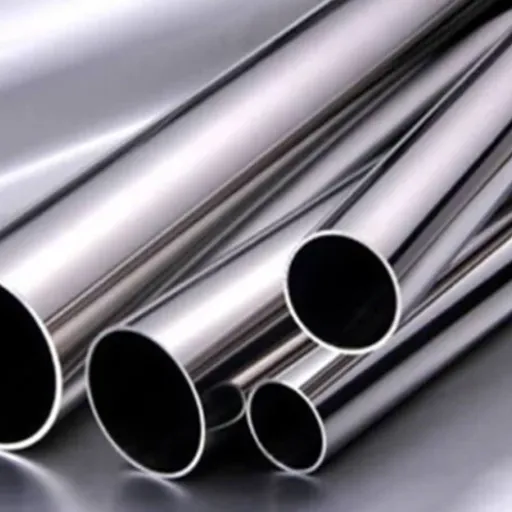
Durability and Longevity
The stainless steel pipes that comply with ASME are a great example of durability and long life. They are made of high-end materials and can take extreme temperatures, high pressures, and even corrosive environments. Thus, their use in different industrial sectors would be extensive.
💪 Durability Advantages:
- Extreme Temperature Resistance: Maintains integrity in harsh thermal conditions
- High-Pressure Capability: Withstands demanding pressure requirements
- Corrosive Environment Protection: Resists degradation from chemicals and elements
- Reduced Replacement Frequency: Long service life minimizes downtime
- Lower Maintenance Costs: Fewer repairs and interventions needed
- Cost-Effective Solution: Higher upfront investment pays off over time
- Eco-Friendly Choice: Longevity reduces waste and environmental impact
The latest data from search queries has confirmed that there is a rising trend for corrosive-proof and even lasting piping systems which in turn positively reflects on the growing usage of steel for both small and large projects. This toughness results in less frequent replacements and lower maintenance costs over time, thus providing a cost-effective and eco-friendly choice for the industry that seeks efficiency and reliability.
Corrosion Resistance Features
The primary reason for stainless steel’s corrosion resistance is the chromium content in it. It is this property that allows for the formation of a passive layer of chromium oxide at the surface, thus keeping it safe from rust and oxidation. Such a trait becomes very critical for locations where humidity, chemicals and temperature variations are always present.
🛡️ Corrosion Resistance Mechanism:
Chromium Oxide Layer Formation
When chromium in stainless steel reacts with oxygen, it creates a protective passive layer that prevents rust and oxidation, providing self-healing properties when scratched or damaged.
Ideal Applications
- Marine environments with saltwater exposure
- Chemical processing facilities
- High-humidity construction sites
- Temperature-varying industrial settings
The current stats from search engines substantiate the need for the application of such corrosion-resistant materials as stainless steel in industries that are prone to harsh conditions. The growing interest is, therefore, accompanied by the pertinent question: why is stainless steel so widely used in these applications? The answer is its extraordinary toughness, love of fastidiousness, and ability to keep its form even in brutal environments making it the very choice of professionals valuing long lasting, cost-effective options.
Safety and Compliance Advantages
The advantages of stainless steel in terms of safety and compliance are the main factors leading to its extensive use in several industries. Its non-toxic and inert nature make it suitable for food processing, medical applications, and pharmaceuticals that require utmost sterilization.
| Compliance Standard | Applicable Industries | Key Requirements |
|---|---|---|
| FDA Approval | Food processing, pharmaceuticals | Non-toxic, safe for human consumption |
| ISO Certifications | Manufacturing, quality control | Quality assurance, standardization |
| Environmental Regulations | All industries | Sustainability, reduced environmental impact |
| ASME Standards | Construction, energy, manufacturing | Safety, reliability, performance benchmarks |
A significant trend in search queries revealed that there had been an increase in the importance given to the compliance with the global eco-regulations, thus the sustainability and less environmental impact of stainless steel being a point in favor. This makes it a perfect material for the companies that want to be eco-friendly and at the same time do not compromise on safety and hygiene standards in their processes.
Frequently Asked Questions (FAQ)
❓ What is the ASME stainless steel pipe schedule number?
The ASME stainless steel pipe schedule number, for example schedule 10s or schedule 80s, signifies the pipe’s thickness. This schedule number serves as a reference to the different sizes and weights of pipes. As an instance, a schedule 10s pipe has a lesser thickness than the 80s pipe which is used in high-pressure settings. Knowledge of the schedule is essential for making the right pipe selection for restricted or specified temperatures and pressures. The ASME B36.10M and B36.19M charts could conveniently provide the exact dimensions and weights of these pipes.
❓ What are the dimensions of ASME stainless steel pipes?
The dimensions of ASME stainless steel pipes are defined and confirmed by the ASME B36.10M and ASME B36.19M international standards, allowing pipes of different types and sizes that include but are not limited to, NPS 10, NPS 12, and even DN 300 and DN 350-550. The usage of such standards guarantees uniformity in pipe manufacturing and performance across a variety of applications. The nominal pipe size (NPS) stands for the internal diameter of the pipe while the wall thickness and schedule number together define the outer dimensions and weight of the pipe. The charts associated with relevant standards should be checked to pick the right dimensions for your construction work.
❓ What is the weight of ASME stainless steel pipe?
The weight of the ASME stainless steel pipe primarily depends on its size, schedule, and the material’s density. For example, NPS 12 which is a larger diameter pipe will weigh a lot more than a smaller one, i.e., NPS 10 especially if comparing pipes of different schedules. The ASME B36.10M and B36.19M charts have listings of the weight per foot of various sizes. It is wise to consider the weight while doing your pipeline installation as it might impact the supports and hangers that you will use for the system.
❓ What are seamless and welded ASME stainless steel pipes?
Seamless and welded ASME stainless steel pipes are the two main types in which the industry uses these pipes. The first type refers to the production of the pipes without any seams or joints, which are the advantageous features of seamless pipes for they are also high-pressure applications and can withstand higher stress. Contrary to this, welded pipes join two pieces of metal which, under certain conditions, can be more economical than the other way around. Both types of pipes of different sizes and standards are available and thus they all can be adapted for various operating conditions that may include pipelines with low-temperature and low-pressure conditions.
❓ How does wall thickness affect ASME stainless steel pipe performance?
The performance and the range of applications for ASME stainless-steel pipes are largely determined by the pipes’ wall thickness. Increased thickness can result in higher strength and pressure resistance and thus making them suitable for extremely high-pressure areas. On the contrary, lesser thick pipes can be used in less pressured zones, which thereby not only checks the material cost but also the weight. The pipe schedule, like schedule 10s or schedule 80s, is a direct reflection of wall thickness so it is vital to ensure the correct schedule that meets the application’s needs. Moreover, an understanding of wall thickness helps adhering to industry standards as well as assuring safety in pipeline design.
Conclusion
ASME stainless steel pipes represent a critical component in modern industrial infrastructure, offering unparalleled reliability, durability, and performance across diverse applications. From construction sites to chemical processing plants, from healthcare facilities to oil and gas operations, these pipes have proven their worth through their exceptional corrosion resistance, structural integrity, and compliance with the most stringent international standards.
Understanding the technical specifications, including grades like 304, 316, and their variants, as well as the importance of schedule numbers and wall thickness, empowers engineers, contractors, and facility managers to make informed decisions that balance performance requirements with cost considerations. The ASME standards ensure that these pipes meet the highest safety and quality benchmarks, making them indispensable for applications where failure is not an option.
As industries continue to evolve with increasing emphasis on sustainability, safety, and operational efficiency, ASME-compliant stainless steel pipes stand ready to meet these challenges. Their combination of longevity, minimal maintenance requirements, recyclability, and adherence to global regulatory standards positions them as the material of choice for forward-thinking organizations committed to excellence in their operations. Whether you’re planning a new infrastructure project or upgrading existing systems, investing in ASME stainless steel pipes is an investment in quality, safety, and long-term value.
Reference Sources
- Stanford University:
A document discussing high-temperature characteristics of stainless steel pipes, including ASME code specifications. High-Temperature Characteristics of Stainless Steel
- University of North Texas Digital Library:
A detailed analysis of margins in ASME code strength for stainless steel pipes. Estimates of Margins in ASME Code Strength
- University of Maryland:
A guide on domestic water piping systems, referencing ASME SA 312 stainless steel pipes. Domestic Water Piping Systems and Specialties

